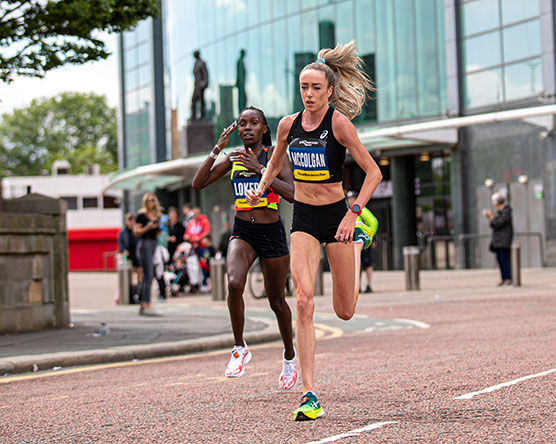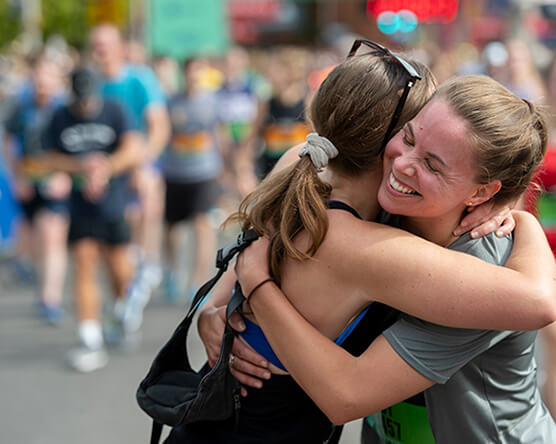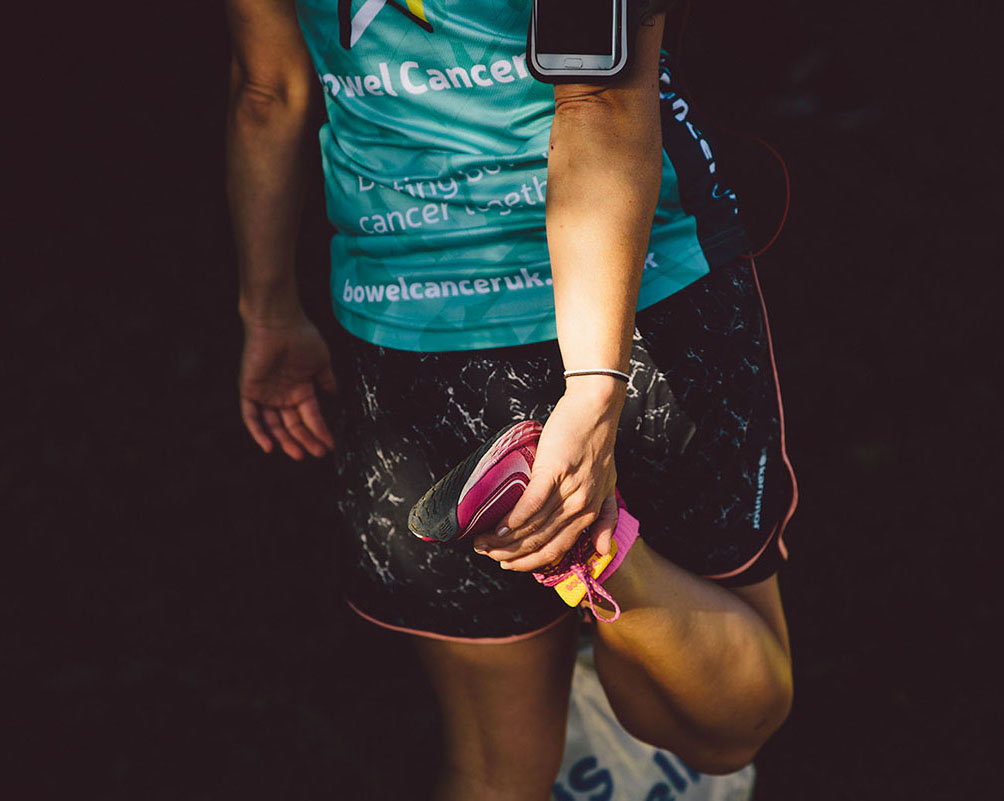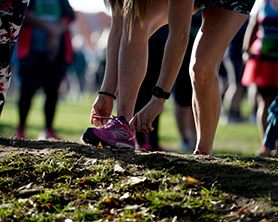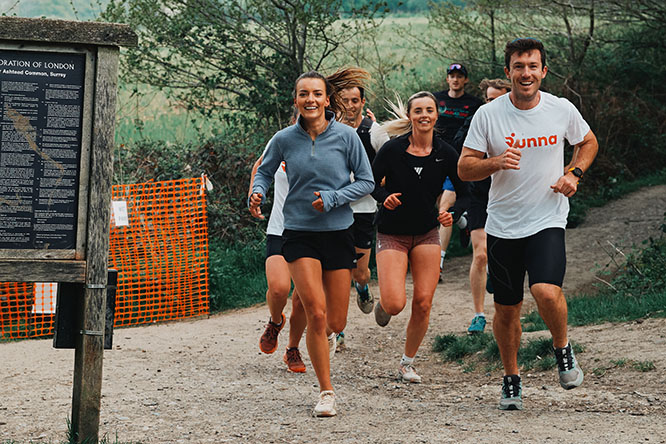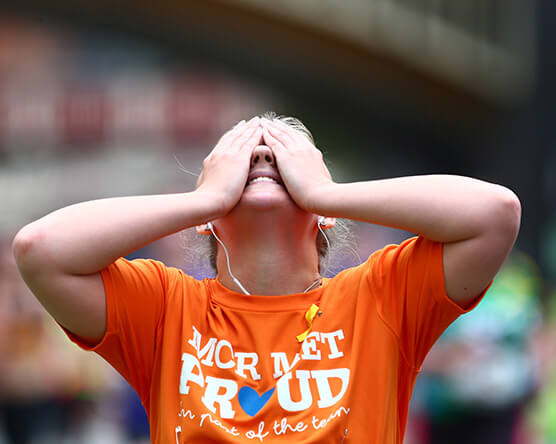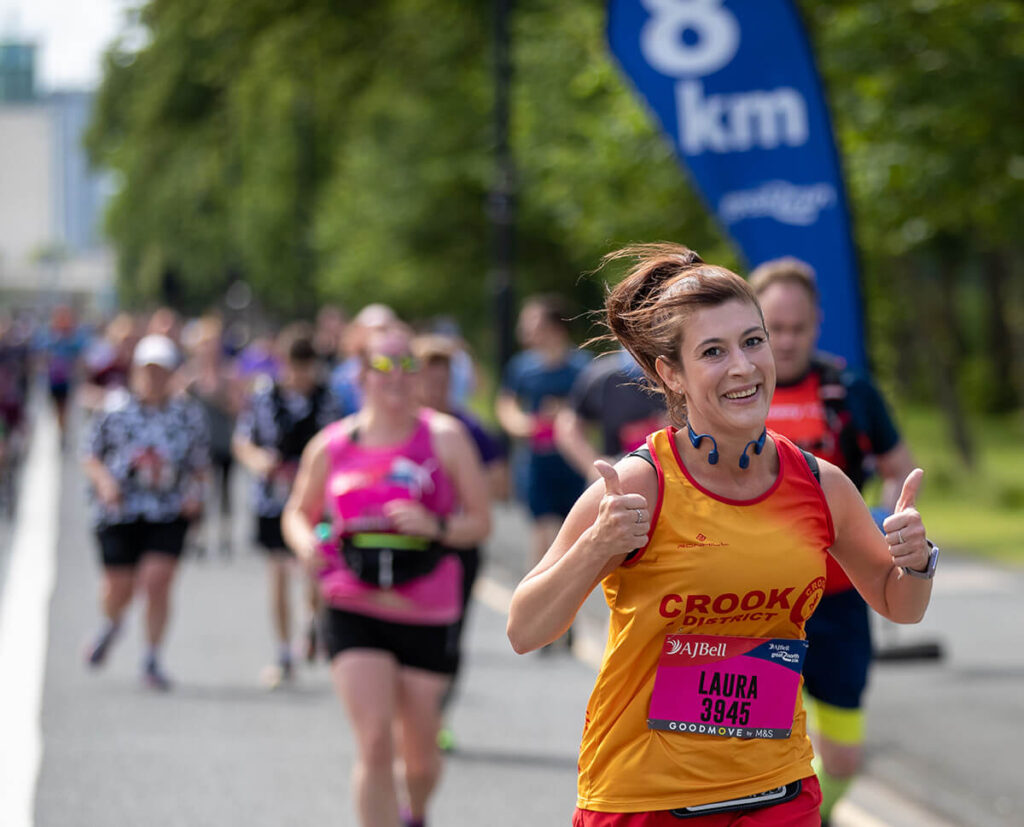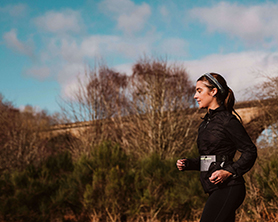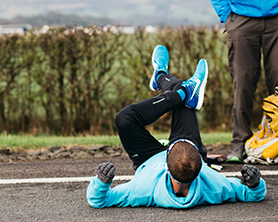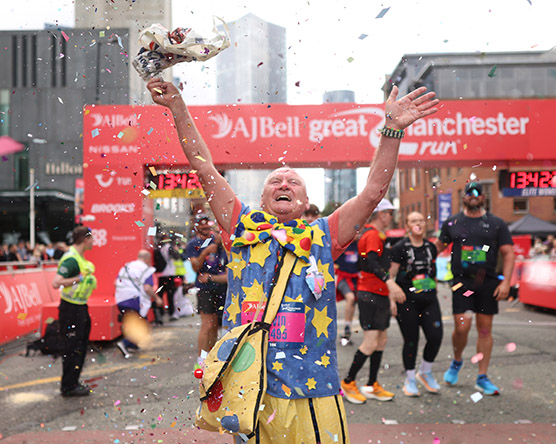As the colder, darker nights start to draw in, it’s time to start thinking about how we will continue with our training and improve our performance during the winter months. We spoke to Commonwealth champion, gold-medal athlete and Great Run Ambassador, Eilish McColgan, to get her top tips for running during off-season.
Warm Up.
A simple way to get the body warmed up is to do some dynamic stretches and glute activations in the house before you head out the door. It might take an extra 10-15minutes, but your muscles will be thanking you when they get outside. If warming up outdoors is your only option, take an extra layer that you can either pick up at the end of your run or even tie around your waist.
Check The Weather.
It’s always best to be prepared for whatever the weather gods throw at you! Personally, I prefer to have more layers on to keep warm, than feeling too cold. The last thing I want is for my body to get a chill and to knock my immune system. I’m lucky to have access to a treadmill, so if the underfoot looks to be too icy to run on – I’ll choose to run indoors. But if you don’t have the luxury of a gym, then make sure you have the right grip on your shoes!
Layers.
Base layers can be your best friend in the winter. Keeping your core warm with an under layer or even a gilet can make all the difference. These are usually lightweight and far easier than wearing a big puffa jacket.
Even if you get too hot during the run – a hat and gloves are small enough to pop in your crop top or pockets for the remainder of the run. I never train without a headband in the winter. Although it’s only on my ears, I feel it keeps my body feeling a little warmer
Keeping the toes and ankles warm can help avoid any unwanted muscle or tendon tweaks. Normally, I would wear compression socks on most of my winter runs. Keeping the calf muscles compressed and warm at the same time helps to reduce my chance of injury.
Cut the Recovery.
When the temperatures really start to plummet, focus on longer reps with reduced recovery. Now is not the time to channel your inner Usain Bolt. Keep the speed work to a minimum and focus on strength and endurance work. Maybe even try jog recoveries between your intervals to keep the body moving.
Join a Club.
The best way to keep motivation high is to join a local running club. It will bring an added social element to keep things fun and exciting each week. You might even find some new training routes around your local area!
Enter a Race or Set a Goal.
Motivation can always start to dip over the winter but setting a goal or entering a race, can be a great motivator. It could be to hit X amount of miles by a certain date or to run a personal best at a parkrun in a few weeks’ time. Having something there as a dangling carrot can give you that extra boost you need to keep moving!
Heat Things Up.
When finishing up a run or training session in cold or wet conditions, do your best to remove your wet clothing and get warm as soon as possible. It’s important to not let a chill set into you, as that will have a knock on effect to your immune system. Keeping warm is key, so grab yourself a hot chocolate and a Chia Charge bar to refuel.
When running in the Winter, there are also a few top safety tips I would always advise every runner to bear in mind before they head out to train;
Be Seen.
Visibility is super important as the dark nights start to creep in. Wearing bright clothing and preferable something hi-vis will give motorists and cyclists a better chance of spotting you. Head torches are important for two reasons. Firstly, to allow you to see the road or trail clearly which will avoid any unnecessary tumbles. And secondly, to increase visibility to others.
Plan Your Route.
Before you head out for your run, I would always advise any runner to plan their route carefully, and always inform a family member or friend as to where you’re going – simply giving them a quick heads up of your running route, before you head out the door.
Safety First.
For some, wearing a personal safety device gives an added layer of security – especially when running alone in the dark. Online you can find devices that emit a loud alarm to attract attention, whilst others can send alerts to your family members. I feel very fortunate to not have to run in the dark very often, but I know for a lot of the runners we coach – particularly female runners – they feel for more comfortable carrying a safety device.
Be Alert.
When running alone, I like to use headphones that are open ear to allow me to hear my surroundings whilst I run. Keep the volume low to ensure you’re aware of what’s going on. Always aim to run on pavements or cycle paths as much as possible and avoid running on unlit roads.



